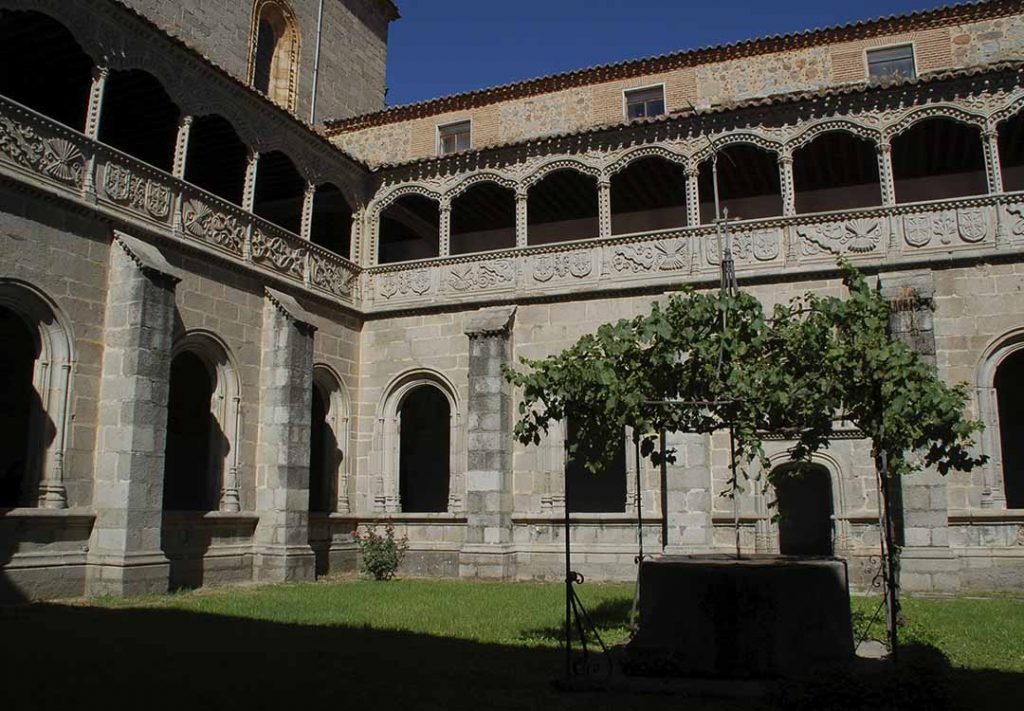ATTRACTIVE CORNERS OF ÁVILA AND ITS PROVINCE
THE CATHEDRAL OF ÁVILA
Avila Cathedral, from the transition from Romanesque to Gothic, is considered the first Gothic cathedral in Spain. Cathedral-fortress, its apse, the cimorro, is embedded in the wall, being its largest cube. It has a Latin cross floor plan with three naves, cruise ship and semicircular double-headed header. The tower on the right is unfinished and the left is topped in merlons with saeteras. Its impressive door of the Apostles of the thirteenth century was moved from the access to the north wall. In it we can visit the Trascoro, with plateresque bas-reliefs and important biblical scenes, the Girola, in which the sepulcher of El Tostado, of Vasco de la Zarza, the Altar Altarpiece of Pedro Berruguete, the Altar of San Segundo or that of Santa Catalina. It was declared a National Monument in 1949.


REAL MONASTERY OF SANTO TOMÁS
The construction of the Dominican Monastery of Santo Tomás de Ávila begins around 1482. On the initiative of the Catholic Monarchs, a palace will be built around the cloister of Los Reyes and the sepulcher of Prince Don Juan in the church. The University of San Tomás is founded in the 16th century and will have life until the 19th century. The monastery has three cloisters: that of the Novitiate, very sober and with hardly any ornamentation, that of the Dead, where the friars were buried, with more abundant decoration, and that of the Kings, with forty arches on the ground floor and fifty-six in the upper one The main ship is very slender. In this Monastery, declared a National Monument in 1931, there is a museum of oriental art, worth visiting, and another of Natural Sciences.
SAN FRANCISCO MONASTERY
Outside the city, in the Ajates suburb, this Gothic-style monastery is built in the 13th century. Inside it highlights its starry vault, attributed to Juan Guas. During the French invasion its ruin ensues, being used as a quartering of troops. Lately it has been restored and used for cultural events, being the seat of the Municipal Auditorium.


ROYAL MONASTERY OF SANTA ANA
This Cistercian construction dates from the second half of the 14th century. Major reforms are carried out during the 16th and 17th centuries. Its cloister has three heights and on the outside stands a brick bulrush. The church has a single nave with a three-body vault, divided by semicircular arches. Queen Isabel and her son Felipe II spent long periods in it. It is currently the administrative headquarters of the Junta de Castilla y León in Ávila.
